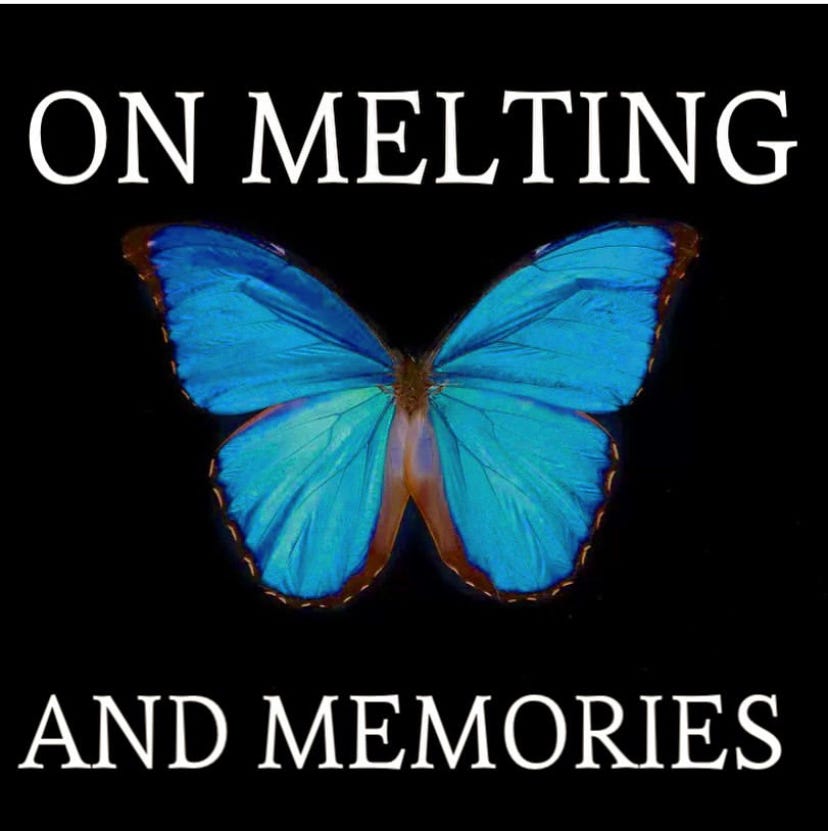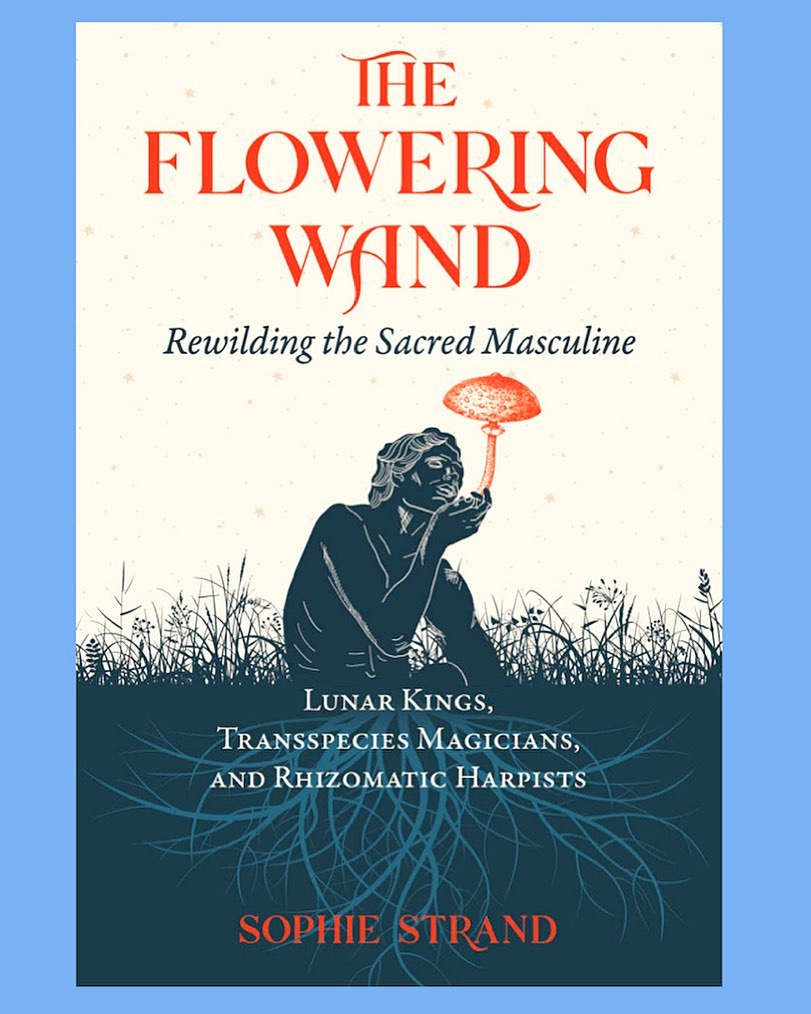On Melting and Memories: Caterpillar Alchemy
The oak leaf tastes like destination. And origin. Briny and dense as the biotic oceans of the Precambrian period. Then, the hairs on your face bristling with appetite, grasping another textured expanse of leaf with your jaw, you bite, and the flood of taste is freshly wet, each nourishing molecule of xylem edging you closer to the place where all senses, all time condenses and melts. That nacreous nest, spun of moonlight shaved from the lake’s face. The cocoon where, you will no longer eat leaves; you will eat yourself.
The chrysalis flickers symbolically. While typically viewed a symbol of birth and transformation, it could just as easily be interpreted as a self-excreted coffin or a tomb. A caterpillar doesn’t decide to make a chrysalis. The chrysalis begins when they begin to outgrow their skin. When, leaf-fattened, the discomfort of one state of being begins to chemically crescendo, signaling the release of the hormone ecdysone and the suppression of the caterpillar’s “juvenile” hormone. Transformation is precipitated by deep, somatic discomfort. The caterpillar’s appetite, it’s thirst for green – the color, the taste, the texture - stretches its silhouette to the point of destruction.
There is a difference between the ritual of initiation and somatic initiation. The ritual is anticipated, prepared for, performed, and assisted by a community. The other is decidedly non-consensual. Sick people and bereaved people are often told they are going through an initiation. But I always want to counter with, “It’s only initiation if you survive”. While your skin is busting open, your body cascading into waves of chrysalis-building chemicals, it may be impossible to classify your experience as either terminal or germinal.
Inside the cocoon the caterpillar digests itself. It deliquesces its nervous system, guts, mouth, eyes, muscles, and legs. What does it feel like to melt? I would hesitate to say it feels like “becoming yourself”. What if one day after a big salad you suddenly started to feel very sick. You went to lie down, rubbing your temples. Maybe a migraine was blooming behind your eyes. When, suddenly, you realized your skin was sloughing off. There was a tidal pool where your chest should be. There is every reason to believe that the caterpillar’s metamorphosis feels terrifying. Or that it feels like death. I wonder if the radical inability to classify the experience is a necessary ingredient in transformation. Each one of the caterpillar’s cells has held this secret ability to self-destruct since birth. This, to me, seems the most comforting thing. Even if the mind is destabilized, literally liquefied, by the transformation, even if the body puddles, you are being “authored” at a deeper level than mind or skin-silhouette. You are being distilled by the intuition of your own cells. A few “imaginal disc cells” remain constant that then “use” the slush of protein and matter to compose a butterfly.
Tomb or womb, the cocoon is a vessel. An autopoietic boat through the meltwater of your own transformation. It both creates and shapes disorder. An interesting fact is that the caterpillar and the butterfly both “fit” inside of the cocoon. When we digest ourselves, we create ourselves. Not a single cell is expendable. Nothing is discarded. The butterfly, then, is a remarkable act of inclusion. No part of the caterpillar will be exiled from the ecstasy of flight. Yet no part of the caterpillar will remain unchanged.
Does the butterfly share a common self with the caterpillar? They are composed from the same material, but the phase change is so dramatic that it is hard to believe that the flavor of consciousness remains constant. What type of an “I” gets translated through the cocoon? There is no way of knowing for sure, but studies have arrived at an astonishing fact. Although the nervous system of the caterpillar, and the brain, are thoroughly disintegrated, the butterfly retains specific memories from its time as a caterpillar. This fact destabilizes modern neurobiology’s insistence, that despite a lack of proof, memories are stored in the brain. A study completed by Georgetown University biologists showed that tobacco hornworm caterpillars given mild shocks when it exposed to certain smells retained the aversion and fear of the smell post metamorphosis. One of the members of the study, Martha Weiss, has mused that this could explain how certain female butterflies remember safe plants to lay their eggs on. These were the same plants they feasted on as caterpillars.
I’m less interested in find a concrete answer to the mystery of butterfly memories. I’d like to live the question, as the poet Rilke advise, for a little bit longer. What does it mean that certain memories make it through? What do we hold onto when we feel like we are dying, melting inside the very structures – bodily and culturally – we thought constituted a self? At what point in reconstitution, at what level of cellular complexity, does the butterfly stop dying and start becoming? What does it feel like to break through the green skin of the cocoon?
When we feel our skin start tightening, our cells thawing into fluidity, what memories, what tastes and plants and ideas and loves, do we decide to take with us through the cocoon? What love do we recycle and embroider into the pattern of our new wings?
Sources: Wired Article "Butterflies Remember What They Learned as Caterpillars" , The Conversation Article "Despite metamorphosis, moths hold on to memories from their days as a caterpillar" .
Updates: There’s still time to sign up for my course Myth & Mycelium: Rewilding the Gospels with ADVAYA. The first session recording and resources are now up! Learn more here: Myth & Mycelium Course.
My book The Flowering Wand: Rewilding the Sacred Masculine is now available for pre-order from all online booksellers here and from my publisher Inner Traditions.
I am reposting this essay because of the general meltwater experience a lot of us are having right now. We are fully liquid these days. Thanks for doing me in the shapeless zone.
This has been the free version of my newsletter. If you choose to support the paid version of this newsletter, you will receive two newsletters a month featuring everything from new essays, poetry, excerpts from my upcoming books and projects, mythic research, reading lists, poetry, book reviews to ecological embodiment exercises, playlists, personal updates, and generally a whole lot of funk and texture.
I am overwhelmed with gratitude by how many of you have showed up here (and throughout the past year across platforms). As someone struggling to balance chronic illness (and just how expensive it is to be sick in America) with writing, know that you are very practically keeping me alive, keeping me afloat. Thank you deeply. I love you all so much.





Thank you for this potent articulation Sophie. The nature of memory feels relevant given the tomb/womb moment we are in as a species and begs the question, if we do survive beyond the next 50-100 years, will it be because we came out as something "new" or that we remembered something. Some say that we as human beings lost our original instructions, and yet, in the story of the caterpillar, there was an instruction of the butterfly latently held in it's cells, activated through a form of self-destruction. And the memory of the "safe plant to lay eggs on," is that a continuance of the caterpillar through the cocoon into the butterfly, or is it an ancestral memory of butterflies past? Have you ever seen an ancestral bear trail - where bears over many life-times walk the same path in the forest, indenting the ground with generations of the gravity of berry fat and fish, scientists unsure why they do this.. perhaps it is so that they can remember, perhaps these ancestral bear trails are a form of ancestral memory charging station, so that the bears can keep on being beary themselves with all the wisdom that came before.
In 2019, I went on Ancestral Pilgrimage to Eastern Europe to bear witness to the historic genocide of one of my ancestral lines. This trip was prompted through a realizing that my personal troubles held roots, held memory, in a time and place far beyond my own. When there, one day, walking along railroad tracks, memories flashed in my being of death marches to trains, or forced exile and ruin. Was I imagining this? No, I don't believe so. I was digesting this, like the caterpillar, slowly recking myself. For those of us who trouble finds (and does it not find us all in our own way?), could perhaps this trouble be some greater digestion process happening through in service to a latent reality, contoured through other memory that we can't yet perceive? I don't want to glorify pain, illness, trauma and I certainly would not suggest this to many in the world in far more harrowing situations than my own - and yet this consideration re-emerges for myself on this page, spurred by the considerations laid forth in your essay. It draws me back to the title for this substack Sophie, which I read more as a prayer "Make Me Good Soil," and I wonder now, if it is soil you are becoming, or truly wishing for? What if whatever lays beyond this current chrysalis is, by nature's design, unknown until one is there? Does the Caterpillar know it's becoming a butterfly? And I suppose, as you iterate in your essay, "It's only initiation if you survive.." and here lays a bifurcation point.. if it's a tomb that is cast, soil one becomes (which isn't such a bad thing!), however, if it is a womb, or a chrysalis, then perhaps, wings are what shall grow.
thank you for this, sophie~ 🙏🏻 🐛
stunning as always.